What does it mean if my Panasonic S-125MW1E5 displays the F03 error code?
- JJorge ToddSep 3, 2025
The F03 error code on your Panasonic Heat Pump indicates an abnormal refrigerant sensor 2 (E3). This issue is handled automatically by the system.
What does it mean if my Panasonic S-125MW1E5 displays the F03 error code?
The F03 error code on your Panasonic Heat Pump indicates an abnormal refrigerant sensor 2 (E3). This issue is handled automatically by the system.
What does P12 error code mean on my Panasonic S-125MW1E5?
The P12 error code on your Panasonic Heat Pump indicates abnormal water pump speed. You should re-run the system.
What does P09 error code mean on my Panasonic S-125MW1E5?
The P09 error code on your Panasonic Heat Pump indicates abnormal water flow. You should re-run the system.
What does L16 error code mean on my Panasonic S-125MW1E5?
The L16 error code on your Panasonic Heat Pump means the test run for the water circuit is not finished. You should perform a test run for the water circuit.
What does P07 error code mean on my Panasonic S-125MW1E5 Heat Pump and how can I resolve it?
The P07 error code on your Panasonic Heat Pump indicates an abnormal internal heater overload. You can cancel this from the remote controller.
What does L25 error code mean on my Panasonic Heat Pump and how do I fix it?
The L25 error code on your Panasonic Heat Pump indicates an unmatched remote controller. To fix this, reset the power supply by turning it off and on.
What does L13 error code mean on my Panasonic S-125MW1E5 and how to fix it?
The L13 error code on your Panasonic Heat Pump indicates a mismatched indoor unit. To resolve this, reset the power supply by turning it off and on.
What does it mean if my Panasonic Heat Pump displays the F11 error code?
The F11 error code on your Panasonic Heat Pump indicates an abnormal water outlet sensor 2 (BL). This issue is handled automatically by the system.
What does it mean if my Panasonic S-125MW1E5 displays the F10 error code?
The F10 error code on your Panasonic Heat Pump indicates an abnormal water inlet sensor (TA). This issue is handled automatically by the system.
How to reset Panasonic S-125MW1E5 L13 error?
To address the L13 error on your Panasonic Heat Pump, try resetting the system by turning the power supply off and then on again.
Crucial information before commencing installation.
Guidance on seeking assistance for special installation issues.
Manufacturer's disclaimer regarding installation errors.
Electrical safety guidelines and procedures for wiring.
Safe practices for moving indoor and outdoor units.
Specific considerations for installing the unit within a room environment.
Guidelines for installing on challenging outdoor sites.
Recommendations for securing the unit in windy conditions.
Advice for installing in areas prone to heavy snow.
Warning against installing the unit in laundry rooms.
Critical safety warnings related to refrigerant handling and leaks.
Tips for ensuring leak-free refrigerant tubing connections.
Safety measures to follow before and during unit servicing.
Strict warning against modifying or disassembling the product.
Details on the refrigerant used and its global warming potential.
Instructions for filling out and applying the refrigerant charge label.
Precautions related to interacting with the outdoor unit's physical components.
Identifies and lists the primary components of the Air-to-Water system.
Lists essential tools needed for installation that are not included.
Lists accessories provided with the Air-to-Water unit.
Lists optional accessories that need to be supplied by the installer.
Specifies recommended copper tube and insulation for refrigerant lines.
Lists other materials needed for the installation process.
Guidelines for choosing the optimal location for the indoor unit.
Criteria for selecting the most suitable installation site for the indoor unit.
Instructions for securely mounting the indoor unit's installation plate.
Steps for drilling wall holes and installing piping sleeves.
Procedures for physically attaching the indoor unit to its mounting plate.
Guidelines for connecting the water circuit to the indoor unit.
Essential safety and procedural notes for electrical wiring.
Specifications for power supply wiring based on length and diameter.
Step-by-step guide for connecting refrigerant tubes using the flaring method.
Instructions for making refrigerant tubing connections between units.
Recommended placement criteria for the wired remote controller.
Procedures for physically mounting the remote controller unit.
Procedure for performing a test run on the water circuit.
Steps for safely removing the indoor unit's front plate.
Steps for safely removing the indoor unit's side cabinet.
Instructions for selecting the operating mode (TANK or A/C).
Procedures for conducting the water circuit test run.
Steps for accessing and servicing the overload protector.
Procedure to reset the overload protector after a trip.
Instructions to clear the "P07" alarm from the remote controller.
Common issues and their potential causes and remedies.
Crucial information before commencing installation.
Guidance on seeking assistance for special installation issues.
Manufacturer's disclaimer regarding installation errors.
Electrical safety guidelines and procedures for wiring.
Safe practices for moving indoor and outdoor units.
Specific considerations for installing the unit within a room environment.
Guidelines for installing on challenging outdoor sites.
Recommendations for securing the unit in windy conditions.
Advice for installing in areas prone to heavy snow.
Warning against installing the unit in laundry rooms.
Critical safety warnings related to refrigerant handling and leaks.
Tips for ensuring leak-free refrigerant tubing connections.
Safety measures to follow before and during unit servicing.
Strict warning against modifying or disassembling the product.
Details on the refrigerant used and its global warming potential.
Instructions for filling out and applying the refrigerant charge label.
Precautions related to interacting with the outdoor unit's physical components.
Identifies and lists the primary components of the Air-to-Water system.
Lists essential tools needed for installation that are not included.
Lists accessories provided with the Air-to-Water unit.
Lists optional accessories that need to be supplied by the installer.
Specifies recommended copper tube and insulation for refrigerant lines.
Lists other materials needed for the installation process.
Guidelines for choosing the optimal location for the indoor unit.
Criteria for selecting the most suitable installation site for the indoor unit.
Instructions for securely mounting the indoor unit's installation plate.
Steps for drilling wall holes and installing piping sleeves.
Procedures for physically attaching the indoor unit to its mounting plate.
Guidelines for connecting the water circuit to the indoor unit.
Essential safety and procedural notes for electrical wiring.
Specifications for power supply wiring based on length and diameter.
Step-by-step guide for connecting refrigerant tubes using the flaring method.
Instructions for making refrigerant tubing connections between units.
Recommended placement criteria for the wired remote controller.
Procedures for physically mounting the remote controller unit.
Procedure for performing a test run on the water circuit.
Steps for safely removing the indoor unit's front plate.
Steps for safely removing the indoor unit's side cabinet.
Instructions for selecting the operating mode (TANK or A/C).
Procedures for conducting the water circuit test run.
Steps for accessing and servicing the overload protector.
Procedure to reset the overload protector after a trip.
Instructions to clear the "P07" alarm from the remote controller.
Common issues and their potential causes and remedies.
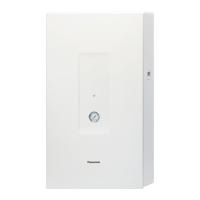

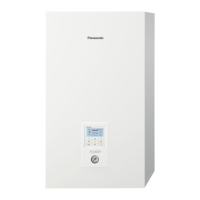
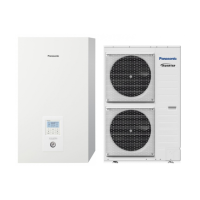
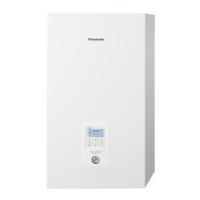


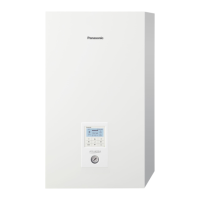

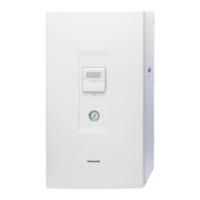

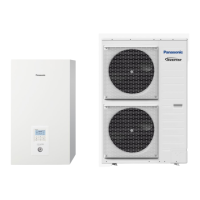
